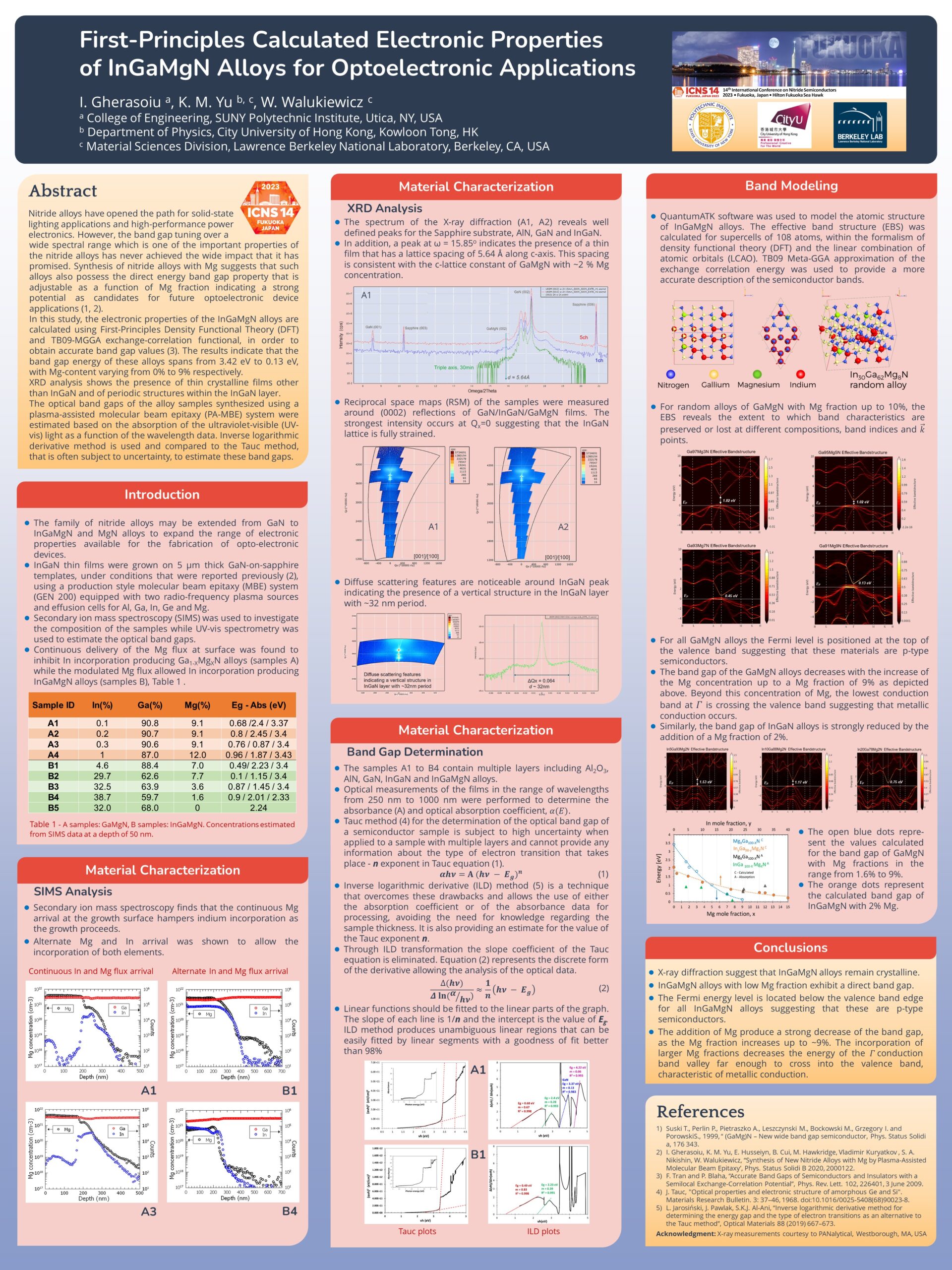First-Principles Calculated Electronic Properties of InGaMgN Alloys for Optoelectronic Applications
I. Gherasoiu a, K. M. Yu b, c, W. Walukiewicz c
a College of Engineering, SUNY Polytechnic Institute, Utica, NY, USA
b Department of Physics, City University of Hong Kong, Kowloon Tong, HK
c Material Sciences Division, Lawrence Berkeley National Laboratory, Berkeley, CA, USA
Nitride alloys have opened the path for solid-state lighting applications and high-performance power electronics. However, the band gap tuning over a wide spectral range which is one of the important properties of the nitride alloys has never achieved the wide impact that it has promised. Synthesis of nitride alloys with Mg suggests that such alloys also possess the direct energy band gap property that is adjustable as a function of Mg fraction indicating a strong potential as candidates for future optoelectronic device applications.
In this study, the electronic properties of the InGaMgN alloys are calculated using First-Principles Density Functional Theory (DFT) and TB09-MGGA exchange-correlation functional, in order to
obtain accurate band gap values. The results indicate that the band gap energy of these alloys spans from 3.42 eV to 0.13 eV, with Mg-content varying from 0% to 9% respectively.
XRD analysis shows the presence of thin crystalline films other than InGaN and of periodic structures within the InGaN layer. The optical band gaps of the alloy samples synthesized using a
plasma-assisted molecular beam epitaxy (PA-MBE) system were estimated based on the absorption of the ultraviolet-visible (UVvis) light as a function of the wavelength data. Inverse logarithmic
derivative method is used and compared to the Tauc method, that is often subject to uncertainty, to estimate these band gaps.

